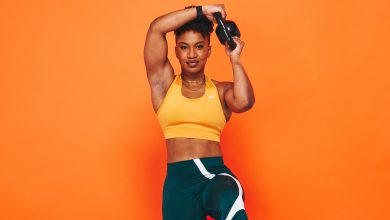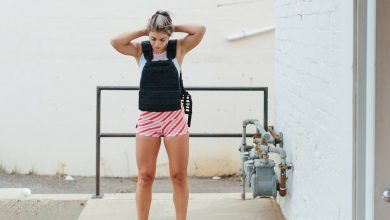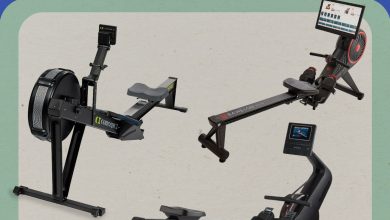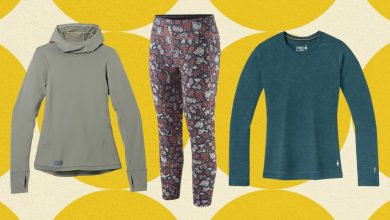If I Don’t Get Sore After a Workout, Does That Mean It’s Not…Working?
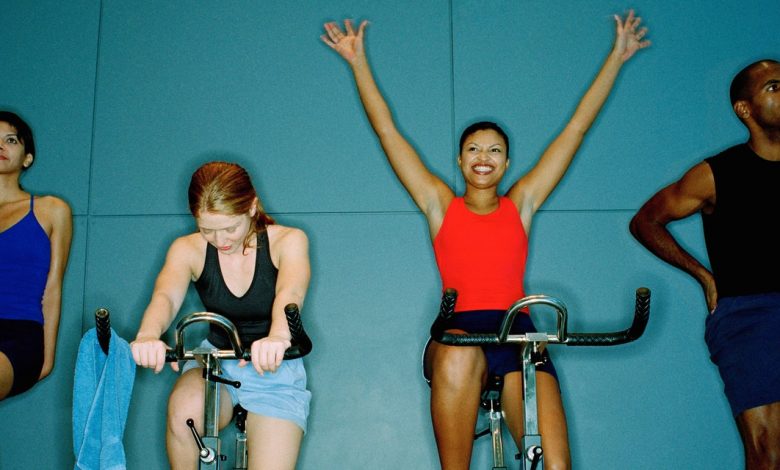
“No pain, no gain” is a long-standing mantra in the fitness world, suggesting a workout has to leave you writhing in a world of hurt in order to be effective. Social media supports this notion, with tons of TikTok videos showcasing people suffering after exercising—say, wincing to use the toilet after leg day or struggling to put their hair up following an arms routine.
So when you don’t get sore after a workout, it’s only normal to wonder whether it was even worth your while. “It is a question that comes up a lot in my practice,” physical therapist and strength coach Rena Eleázar, DPT, CSCS, cofounder of Match Fit Performance in New York City, tells SELF.
But is there any truth to that belief? We tapped experts to dig into what soreness after exercise is actually saying about your workout—and what to focus on if you want to make sure your routine is bringing on the benefits.
Here’s what soreness after a workout is actually hinting at.
There’s a term for the post-exercise aches: Delayed onset muscle soreness, a.k.a. DOMS, Dr. Eleázar explains. As the name suggests, DOMS isn’t something you’ll feel immediately—it typically sets in 12 to 24 hours after a workout and can peak around 24 to 72 hours. So if you feel great walking out of Pilates but wake up the next day with tender glutes and hammies, DOMS is likely at play.
As for what causes it, there’s no definitive answer, but there are a number of theories, Teddy Willsey PT, DPT, CSCS, owner of Healthy Baller Physical Therapy in Washington, DC, tells SELF. The most agreed-upon one is that it happens when exercise causes damage or irritation to your muscles, he explains.
When you exercise, you’re actually creating tiny tears in your muscle tissues. You can’t see the effects of this impact—the toll is microscopic—but it’s believed to set off a very real inflammatory process in the body that results in the sensation of soreness, Stephen Ranellone, CSCS, an exercise physiologist at Hospital for Special Surgery, tells SELF.
DOMS is a lot more likely to happen with new-to-you exercise, whether that be a novel type of movement, speed, or weight, Dr. Willsey says. “Something as simple as doing a rear foot elevated split squat when you had been doing lunges could create a lot more soreness,” he explains. That’s because when you stretch and load your muscle fibers in different ways than they’re used to, they’re more susceptible to those tiny tears, since they’re not yet accustomed to the challenge you’re putting them through.
Along those lines, anyone new to working out or coming back from a long break is more prone to soreness, Dr. Eleázar says, since their bodies just aren’t used to the demand. Even activities that seem like NBD could trigger soreness based on what a person is (or isn’t) adapted to. “For someone who’s completely sedentary, something like power-walking could potentially trigger soreness,” Dr. Eleázar says. Beyond that, plyometric exercises (explosive, jumping moves) and high-intensity resistance training are also more likely to trigger it, according to Ranellone.
Then there’s eccentric exercises, or moves when your muscles lengthen under load, like your glutes as you sink into a squat. Achy muscles are more common following these, since the weight placed on the muscles is greater than the force they’re producing, an imbalance that creates more of that microscopic damage compared to concentric exercises (when your muscles are shortening under load, like your glutes as you stand up from a squat).
Another culprit are group workouts with minimal rest periods—like a high-intensity circuit-style class, for example. These can cause you to push yourself more than you would otherwise, creating “an environment for excessive soreness and fatigue,” Dr. Willsey says.
Beyond certain types of exercise, what you eat and drink can play a role in how sore you get. “If you’re not fueling your body well, you will absolutely get more sore,” Willsey says. Your body needs quality nutrition and hydration in order to effectively rebuild and repair itself following a tough workout. And if you don’t give it that, your muscles may very well pay the price.
What’s more, there is a genetic component to soreness. “Some people just don’t tend to get as sore as others,” Dr. Willsey says. So how much you do—or don’t—feel the aftermath of your workout could boil down to your DNA.
So do you need to be sore to progress at the gym?
Notably absent from the list of reasons you may be feeling sore? A super-effective and efficient workout. That’s because, simply put, there’s no correlation between how good a workout is and how likely it is to leave you achy.
In fact, according to a 2003 review published in the International Journal of Sport and Health Science, the authors concluded that it’s “unlikely” that you have to have sore or damaged muscles in order for them to grow in size or strength.
It’s “a common misconception” that soreness equals a better workout, Dr. Willsey says—and one that it can have some pretty negative repercussions, including increased risk of injury and, ironically, hampered performance in the gym.
Not feeling sore after a workout is actually a good thing.
Feeling ache-free following exercise typically means your body is already used to the workout you performed. “This adaptation can happen when the muscles are no longer being stressed in a way that causes damage,” Ranellone explains. In other words, your body is already familiar with the stimulus, Dr. Willsey says. And that’s actually something to celebrate, since it can indicate you’re getting stronger, Ranellone points out.
In fact, not feeling super sore after a workout is “extremely positive,” Dr. Willsey says, since that makes your workout routine sustainable. Think of it this way: If you always felt like crap after the gym, you probably wouldn’t be all that motivated to keep going, he says. And that would be counterproductive if your goal is to stick with a fitness routine for the long haul. In the short term, it could also stop you from exercising as frequently as you’d otherwise want to, which could limit the gains you’d get from a regular fitness routine.
Moreover, if you’re constantly sore, that may be a sign you’re overtraining, which can lead to overuse injuries over time, Ranellone says.
In order to progress your fitness, you need to target what Dr. Eleázar calls the “sweet spot”—basically, the balance between stressing your body through exercise and giving it the down time it needs to properly recover afterward. “If you’re constantly pushing 110% all the time and every single day, and your body isn’t given a chance to recover from any of that, then you’re basically burning your candle at both ends,” she says. As Ranellone puts it: “The key to long-term exercise success is consistency, slow progression, and listening to your body.”
In sum, soreness isn’t a metric worth chasing.
Not feeling sore after a workout shouldn’t be the metric that determines whether you need to push harder. That’s because “soreness is not the goal,” Dr. Willsey says.
So rather than obsessing over how much your quads quake following leg day, tune into more reliable metrics of success—say, maybe the same exercises feel easier, you’re able to lift more weight or run longer or faster than you did before, or you can nail good form on an exercise you previously struggled with, Ranellone explains.
He often tells his patients and clients that “being sore isn’t the indicator of a good workout—your next workout is. “ In other words, if, over time you can do more or the same workout feels easier, then you know your routine is successful. No hobbling to the toilet required.
Related:
- Why Your Big Toes Play Such a Huge Role in Your Health and Fitness
- 12 Benefits of Strength Training That Go Beyond Building Muscle
- 9 Weight Lifting Tips for Beginners That Will Make Your Workout More Effective
Get more of SELF’s great fitness coverage delivered right to your inbox—for free.
